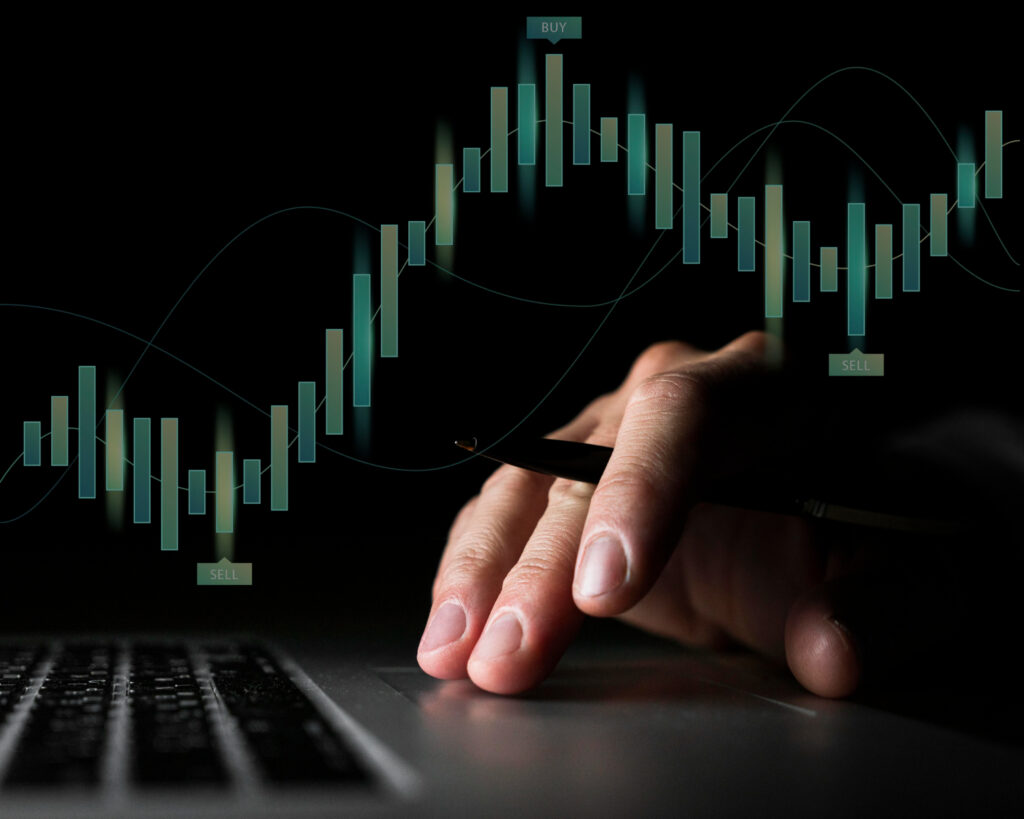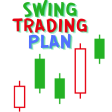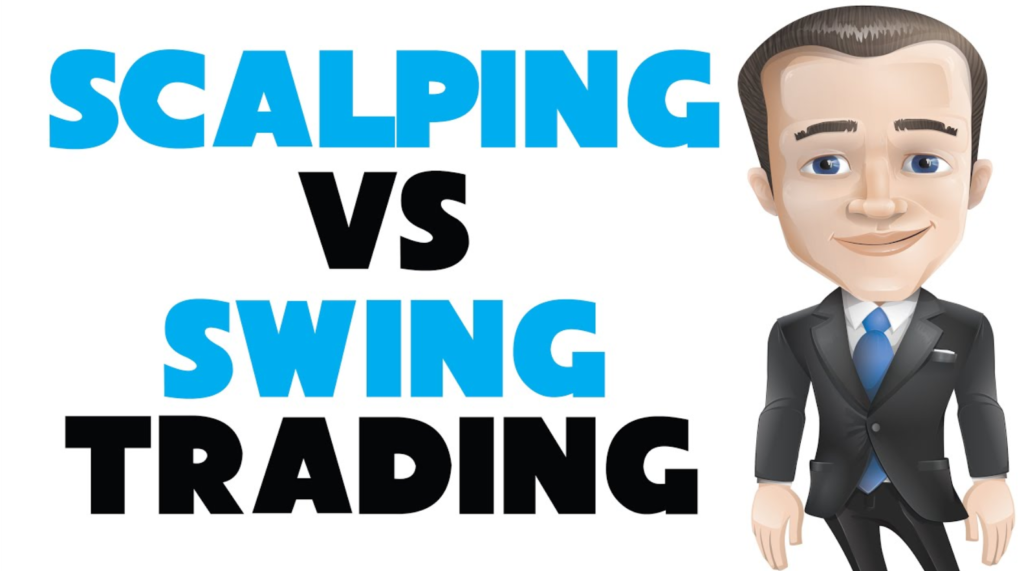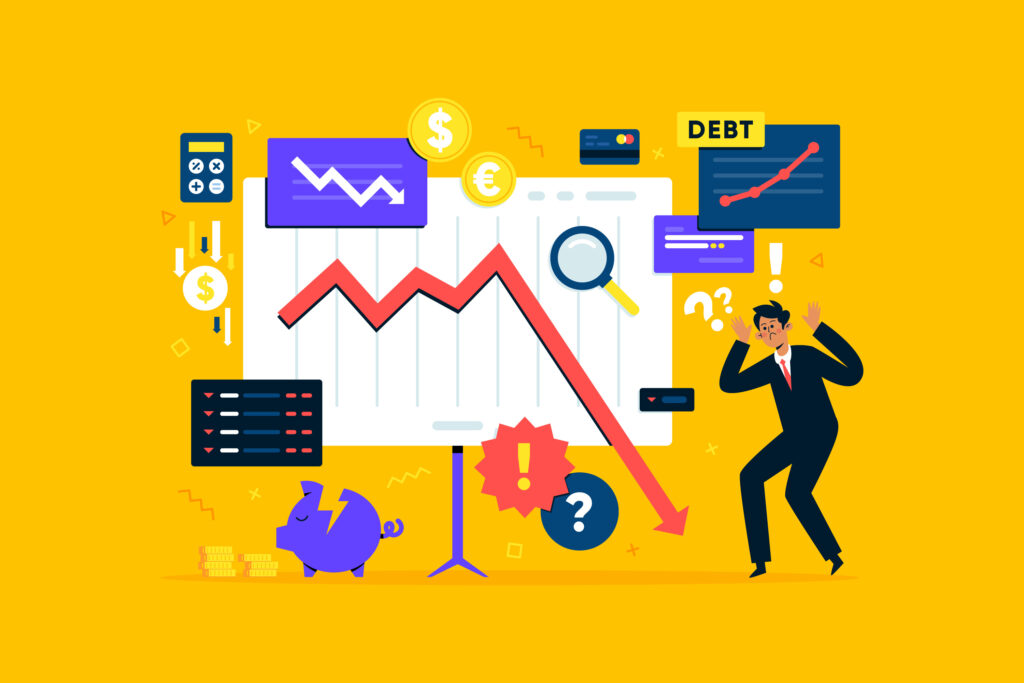Table of Contents
Futures contracts enable traders to speculate and profit from price changes of an underlying asset across many markets. One frequently asked concern among swing traders is whether they can use futures contracts for their trades, considering that futures contracts appear to be better suited for day trading or scalping. Swing traders, on the other hand, can use futures contracts to discover possible trades and profit from price changes through technical analysis. So, it makes sense to want to know how to use futures in swing trading or how to Swing Trade Futures.
Yes, futures can be used for swing trading with proper market analysis and trading strategy. Depending on your capital and experience, swing-trading futures contracts is extremely doable; there are numerous methods for doing so. Your thoughts about how to earn money swing trading futures change as you acquire expertise.
What are Futures Contracts?
A futures contract is an agreement to buy or sell an underlying asset at a future date for a preset price. It is a standardized derivative contract that is established and traded on futures exchanges throughout a trading session. In this case, the two parties agree that one party, the buyer, will purchase an underlying asset from the other, the seller, at a later period and at a price agreed upon by both parties. Trading decisions are made based on market trends and historical trading data.

When someone purchases a futures contract, they are obligated to buy the underlying asset on the agreed-upon date, while the seller is obligated to sell the asset to the person on that day at the agreed-upon price. However, both the buyer and the seller may be in the market for a trading session — to execute trades based on price movements — therefore they may not be interested in exchanging the underlying asset at the contract’s expiration, and they may not even retain the contract until expiry.
Meanwhile, during the trading session, the buyer profits from an increase in the price of the underlying and loses from a decrease; the seller, on the other hand, loses if the underlying’s price rises and gains if it falls. Both parties hope to profit by forecasting market movements.
Futures contracts include several assets, including equities, commodities, currencies, and interest rates among others which are traded. To ensure market efficiency, traders and brokers must be aware of the asset’s trading hours. While certain assets trade nearly 24 hours per day, Monday through Friday, others have shorter trading sessions, affecting the total market.
The price of futures contracts in the markets swings constantly, and the value is recorded as ticks. A tick is defined as the smallest price change that a futures contract makes at any particular time during trading. A tick’s value can range from 0.0001, 0.001, 0.1, 0.25, 0.5, 1 to $1.25, $6.25, $10, $12.50, €10, €12.50, depending on the underlying asset. Each tick signifies a monetary gain or loss for the trader who owns a futures contract in USD. The amount of the tick depends on the futures contract being traded in equities. For example, the E-mini-S&P 500 (ES) moves in $0.25 increments, whereas crude oil (CL) moves in $0.01 increments, with fees applied appropriately.
How Futures Contracts Work?
The U.S. Commodity Futures Trading Commission regulates futures trading. Futures contracts are settled in two stages: mark-to-market (MTM) and final settlement. The former means that the contract’s value is marked to its current market value, whilst the latter occurs on the final trading day of the futures contract.

When a party purchases a futures contract in the market, it is obligated to purchase the underlying asset, such as stocks, at a later date and at a predetermined price, whereas the counterparty (the seller) is obligated to sell the underlying asset to the buyer on the agreed-upon date and price. This can be beneficial for day traders and is frequently enabled by brokers.
Thus, if the stock futures market price fluctuates, the participants earn or lose USD money. At the end of each trading day, the clearinghouse calculates the average of the day’s final futures deals and sets that price as the settlement price. All contracts are then stated to be tagged to the settlement price, and fees are charged accordingly.
For example, if a buyer purchases a futures contract at a futures price of $100,000 in the markets and opens an account with a broker, and by the end of the day, the price has gained 1% ($1,000) in USD, the buyer’s account will be credited with $1,000, with the money coming from the seller’s account (the seller loses $1,000). If the futures price of the contract lowers, the seller makes money and receives a profit transfer from the buyer’s account.
Futures are leveraged contracts (trade on margin), thus a trader only requires a percentage of the contract’s total value to carry it; the broker lends him the remainder of the capital. The initial margin is the portion that the trader must put in his account in order to carry a contract, and it allows the broker to offset any losses in the trader’s account. As the account is depleted by losses, the balance should not go below a particular threshold, known as the maintenance margin. If the account goes below that threshold, the trader will receive a margin call from the broker, prompting them to deposit more money.
The initial margin required for futures trading is usually about 5-20% of the total worth of the contract, and traders can rely on brokers to lend them the rest. In the futures markets, day trading is a popular strategy that requires traders to maintain a maintenance margin of 30-40% of the initial margin. Assuming an initial margin of 10% of the contract’s worth, a trader would need to deposit $10,000 to trade a $100,000 contract with a 10x leverage. If the contract makes a 1% up move, the buyer will gain $1,000 while the seller would lose the same amount.
The expiration schedule for different futures products varies. Some have a new contract every month, others have a new contract every quarter, and some have slightly different timetables. To prevent delivery, speculative swing traders should keep track of contract expiration dates to determine whether to roll over to the next month. Day trading in these markets necessitates close attention to time, and being aware of the expiration timetable is critical to avoiding any unexpected delivery that could harm your trading account.
Those who day trade futures in the stock market are never involved in the actual delivery because their trades shut on the same day they are opened. It is vital to understand that not all contracts are resolved through physical delivery; others, such as index futures contracts, are settled in cash. This can be done again at the end of the contract or before it expires. Swing traders should grasp the terms of their contracts.
Understanding Swing Trading
Swing trading is a speculative trading method that capitalizes on short-term price changes in the stock market, index futures, and futures markets. This trading method falls somewhere between day trading and position trading. Swing traders use margin to increase earnings by holding positions beyond the trading day, but for no longer than a few weeks. Swing traders face overnight risks in these unpredictable markets.

Swing traders seek to profit from buying and selling at interim lows and highs within a bigger overall trend. Technical indicators are used to evaluate stock momentum and optimal timing for buying or selling. To capitalize on opportunities, swing traders act rapidly to enhance their chances of profiting in the near term. Day trading and futures trading are popular among traders seeking short-term gains in the futures markets. To engage in these markets, traders must have a trading account.
Swing traders can check their positions on a regular basis and take action when crucial levels are reached. Swing trading, unlike day trading, does not require constant monitoring as trades typically last several days or weeks.
Why We Can Use Futures Contracts in Swing Trading
Can we use futures contracts for swing trading in the market? So, the basic answer is yes. Most futures deals are swing trades. In fact, most speculative traders quit their contracts before they expire because it is unnecessary to retain a futures contract until it has been settled. This means that traders may keep their short positions for a few days to weeks on margin. Buyers can offset their positions by selling their contracts, whilst sellers can offset their positions by purchasing the contract to terminate the arrangement. Some traders also use services like trading signals and market analysis to aid in their decision-making process.
A futures swing trader, like an equity trader, analyzes the market price of the underlying asset (in this case, a stock index such as the S&P 500 or Dow Jones) throughout the day in order to make informed decisions. When the price swings in his favor, he can give up his stake while preserving pii’s safety and anonymity through secure services. Any gains or losses incurred are adjusted against the margins deposited to square your position.
Swing trading futures contracts in the market differs from swing trading stocks. A trader must have sufficient margin to enter into new contracts with another party. For example, if you bought futures contracts for crude oil from Mr. Alex, you would need to sell the contracts through one party Mr. Jacks to close your position.
For example, in August, a day trader in the futures markets opens a long position for 30 December S&P 250 contracts on margin. In September, he chooses to settle his position before the contract ends by shorting or selling the same 30 December S&P 250 contract to a third party. The clearinghouse considers his position flat because he is now long and short the same number and type of contract, a popular tactic utilized by day traders in the futures markets.
However, it is critical to close out the SAME contract on the market. If a swing trader buys futures contracts for E mini S&P futures with a margin and then sells futures contracts for the June quarter, the position will not be closed. This is because computerized trading systems allow you to call up the underlying asset by giving its base symbol and contract. Accurate information and services are vital for effective trade.
How To Swing Trade Futures Contracts
You can day trade futures contracts on margin by following these four simple steps and employing the services of a single broker.
- Learn the basics: The first step is to understand how futures contracts work and how to trade them profitably. You can teach yourself using many of the free online resources available on the internet, but you may not learn everything you need to trade successfully. To learn about the complex futures market, enroll in a swing trading course taught by an experienced trader. If you don’t have time to understand and analyze the market on your own, you can subscribe to a signal service that provides accurate buy and sell signals.
- Open a futures trading account: When you’ve determined that you’re ready to trade futures, the next step is to open a futures trading account with your preferred broker. Many futures firms provide online interfaces for trading futures contracts. Your aim is to identify the one with the features that match your trading goals and open an account there. When opening a futures account, you should evaluate the minimum deposit, trading costs, and any hidden charges, payment methods, and simplicity of withdrawal.
- Choose the contract to trade: After opening an account, you must select the contracts to trade. There are contracts covering a variety of asset classes, including stocks, commodities, equity indexes, commodity indexes, and many more. Non-asset futures contracts include volatility and weather. You select the contracts you wish to trade and research their markets, keeping track of the factors that influence the markets and how the contracts’ expirations are planned.
- Start trading: When you’re ready, submit your trade orders. The intriguing thing about futures trading is that you can go as long or short as you choose. You can utilize many order types and any method you choose. A trading strategy must be developed and followed.
Strategies For Swing Trading Futures Contracts
The futures market provides several chances for swing traders to profit from price swings. Check out our article on swing trading tactics. They work with both futures and stocks. Here’s another example of swing trading indicators that may also be applied to futures. To be successful, you must apply tried-and-true trading tactics. Here are some ideas for swing trading futures:
The Momentum Strategy
This futures swing trading method is based on price pullbacks, which occur when the price reaches a barrier or support level before reversing to continue in the trend. Pullbacks happen when traders start taking profits, pushing the futures price in the opposite direction of its prior trend. Swing traders can wait for the price to reach a resistance or support level before entering at a more advantageous price with margin. Before entering a trade, make sure the price has signaled another impulse wave in the trend direction. This method can be executed in a single day, resulting in quick earnings. More information can be obtained by conducting market research and analysis.
Breakout Trading
Breakout trading is a futures swing trading approach that allows the swing trader to capitalize on market developments.A breakout happens when the price of an underlying asset exceeds a support or resistance level. Swing traders might exploit increased trading volume and open interest to help their breakout approach. The rule of thumb is to go short when prices break below support and long when prices break over resistance.
Mean-reversion Strategy
This method is effective for swing trading stocks and futures markets. The mean-reversion technique assumes that statistical variables cluster around their mean value. In the case of futures contracts, the price makes extreme excursions to either side of the mean price before attempting to return to the mean. The price overshoots again as it attempts to return to the mean.
The up and down swinging continues, giving trading possibilities for traders to exploit using various indicators and tools. The idea is to recognize when the price is oversold or overbought and likely to reverse, allowing you to track the reversal to the mean. Oversold/overbought circumstances can be identified using several indicators, such as Bollinger Bands, RSI, moving averages, and price action setups.
How much capital do you require to swing trade futures?
Though there is no legal requirement for a trader’s minimum balance to swing trade futures, be sure you have enough in your account to cover trading margins and any volatility that may occur as a result. Small futures brokers accept deposits of $500 or less, whilst larger brands may ask deposits ranging from $5,000 to $10,000. Visit our website for more information on how to open an account. It’s vital to remember that traders should keep a careful eye on their accounts throughout the day to ensure they have adequate funds to cover potential losses.
Conclusion
Swing trading futures contracts is complicated and hazardous, but it may also be profitable if done correctly. Whatever technique you use for swing trading futures, make sure you grasp the market dynamics and your own trading style. It may be necessary to learn from experienced traders first via a reputable trading school or website, but if you are willing to put in the effort, you can subscribe to a trading signal for day-to-day information. One thing is certain: staying educated is essential for getting the most out of your trades.
Frequently Asked Questions
How do futures contracts work?
When a party purchases a futures contract, they agree to buy the underlying asset at a later period, whilst the seller agrees to sell. The contract’s value fluctuates daily, and settlements can be made using Mark-to-Market or on the last trading day.
What is leverage in futures trading?
Futures contracts are leveraged goods, which allow traders to control a contract for a fraction of its overall value. The initial margin is the amount that a trader must deposit, and brokers may lend the remainder.
How do you swing trade futures contracts?
To swing trade futures contracts, grasp the fundamentals, open a futures trading account, select a contract to trade, and stick to a trading strategy. It is critical to have a thorough awareness of the market.
What factors should be considered when opening a futures trading account?
Minimum deposit, trading fees, payment methods, and ease of withdrawal are all significant factors to consider. Traders should find a broker who shares their trading objectives.






